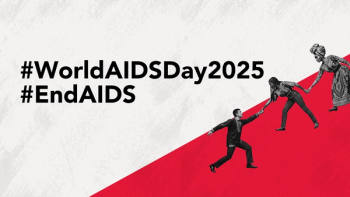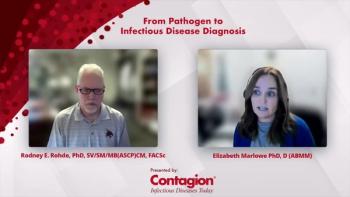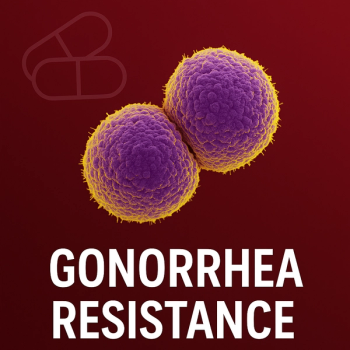
HIV Treatment: Initiation, Adherence, and Accessibility
Segment Description: Joseph Eron, MD; Paul Sax, MD; W. David Hardy, MD; Eric S. Daar, MD; Ian Frank, MD, partake in a conversation on the importance of rapid treatment initiation, the difficulties of adherence, and accessibility.
Joseph Eron, MD: So I’m going to move to talking about treatment. And I just want to bookmark that, we’ll talk about U=U sometime during this treatment thing. Because I think it makes sense to now kind of talk a little bit more about the treatment landscape. Maybe, Eric, you could, like, set the picture. And then we’ll go through some more specific things. But maybe you could set up where we are.
Eric S. Daar, MD: Yeah. When I think about the treatment landscape, I still think it starts at the beginning, and it’s worth reminding everybody that after decades of debate as to when to start, I think everybody completely agrees that everybody diagnosed with HIV—regardless of their CD4 count, regardless of symptoms, regardless of comorbidities—should be offered and encouraged to initiate after antiviral therapy. And that’s because we now have convincing data showing that it prevents disease progression. In addition, we know, and we’ll talk about U=U, that it prevents transmission. But probably as important is that it’s just so darn easy to do. The treatment now, you know most people we start on 1 or 2 relatively small pills often in a day with virtually no adverse effects for the majority of them.
So the decision about when to start is very straightforward. Obviously we need to help people get prepared to take their meds consistently if they’re dealing with psychiatric disease and substance abuse and that. But so we should start everybody. And when we start the guidelines, there’s increasingly a consensus in the guidelines, both in the United States and in Europe, that most recommended regimens are 2 nucleosides and a third drug, and the third drug is essentially always an integrase inhibitor.
And the most recent guidelines, and we may go over this in more detail, have really focused on 2 of the more recently approved integrase inhibitors that are small pills and don’t require boosting, so you don’t have to worry about drug-drug interactions. They are generally very well tolerated and happen to have a high barrier to resistance. So even if things don’t go right, resistance is very unlikely to occur.
W. David Hardy, MD: And in many ways, as the guidelines become more and more small in terms of the number of recommended regimens, it’s getting easier for people who, unlike us, may not have been doing this all their lives and have always been put off by it. Because the guidelines used to have so many different options that it looked too confusing, and the guidelines were so expansive. You know, in younger providers now who are thinking about getting into HIV, the treatment has become simpler. And I think it’s all become good. The downside on all those regimens is really pretty small.
Joseph Eron, MD: That’s true. And 1 thing about treatment initiation is, how quickly should we do it? We’ve talked about this. It’s a thing.
Paul Sax, MD: It’s a thing, right. Historically there was this whole idea that before people started on ART [antiretroviral therapy], they needed to like go through a little educational course, an HIV 101 course, to learn about the importance of adherence and what viral loads CD4 mean and all this stuff. But it turns out that was all garbage. You know?
Eric S. Daar, MD: It wasn’t at the time.
Ian Frank, MD: There was a little garbage.
Paul Sax, MD: You know 1 of the most remarkable moments I’ve experienced recently at a major meeting was watching my colleague, Serena Koenig, present a study that they did in Haiti where they basically took people who were newly diagnosed and randomized them to start that same day they got their diagnosis. Or to go through this little HIV 101 course and then start, and it turns out that the
Joseph Eron, MD: Clinically they do better, right—better survival.
Paul Sax, MD: Survived better. And it turns out we can do that with our treatments now. If people want to start treatment right away, and there is no reason to delay, in the vast majority of people we see now, we give them a prescription for ART that first day.
One thing I will mention is that transmitted resistance, which is a big fear, is significant enough to impair the activity of a bictegravir- or dolutegravir-containing regimen, which is vanishingly rare.
So go ahead and start, and you can just don’t give them HIV 101 course, but after they’re on ART, so.
Ian Frank, MD: So there is certainly paternalism or maternalism in our readiness to prescribe therapy early on. But I would say that still counseling people about the importance of adherence is crucial. And I would also say that there’s no urgent need to start everybody on therapy the day that they’re HIV diagnosed. I think for the studies that are done in Haiti, or other developing-world scenarios, there’s a high loss to follow-up rate, folks are presenting very late in the course of their disease. And they often travel a long distance to get to the HIV clinic.
Joseph Eron, MD: That’s true.
Ian Frank, MD: So some of these issues are less important. We’re going to come back to U=U and as treatment as prevention. We want to get people on therapy quickly to get their viral load undetectable as rapidly as possible. But if somebody comes in and says, “I don’t think I’m ready to start this,” I don’t think we should be twisting their arm to get them to start on therapy.
W. David Hardy, MD: I agree with you that we shouldn’t twist their arm.
Joseph Eron, MD: You should talk them into it.
W. David Hardy, MD: From the prescriber’s side.
Ian Frank, MD: Yes, we should be talking them into it, but, you know, it’s OK for people to walk out of the office without a prescription.
W. David Hardy, MD: What other STI [sexually transmitted infection] do we ever say, come back in 3 weeks and we’ll see if it’s still there; until it gets really bad. Do we do that with hypertension, diabetes, hypercholesterolemia?
Ian Frank, MD: We don’t start people on antihypertensive therapy when their first diastolic blood pressure is 92; they come back.
Joseph Eron, MD: Right, and diabetes might not also be the best example here.
W. David Hardy, MD: But if it’s discovered, and it is diabetic. Then you don’t wait and say let’s wait till it gets worse.
Joseph Eron, MD: Sure, we don’t wait to start the adventure.
Paul Sax, MD: Yes, there are challenges, but most of the time they can be overcome. I know in some regions we don’t have them and we don’t need them. In some places there are starter packs that people have access to 10 days of therapy. It does make people feel better to start sooner rather than later.
Joseph Eron, MD: Yeah. I think my point was kind of like, you do have to have your clinic or office set up to do that. And if you can do it, it’s great. If it’s a few days later, that’s OK, you know? But it’s this idea of it’s an important problem.
Paul Sax, MD: One thing just to mention about San Francisco’s experience, because you know they didn’t do a randomized study, but they have this historical data. And what they’ve shown, importantly, is that this process of starting ART right away has led to a much faster decline in HIV RNA and a faster time to undetectable; but importantly, there was no increased risk of resistance. That’s over time looking at their historical data. It’s not as if they lost anything by doing this.
W. David Hardy, MD: But also they were using, they were using 2 very potent regimens, though: boosted darunavir or dolutegravir exclusively for that study though too. And you wouldn’t expect resistance if they weren't.
Joseph Eron, MD: That’s why we can do this, and we don’t have to worry about hepatitis B. We can wait for that test to come back and that sort of thing.
​​​
Newsletter
Stay ahead of emerging infectious disease threats with expert insights and breaking research. Subscribe now to get updates delivered straight to your inbox.




















































































































































































































































































